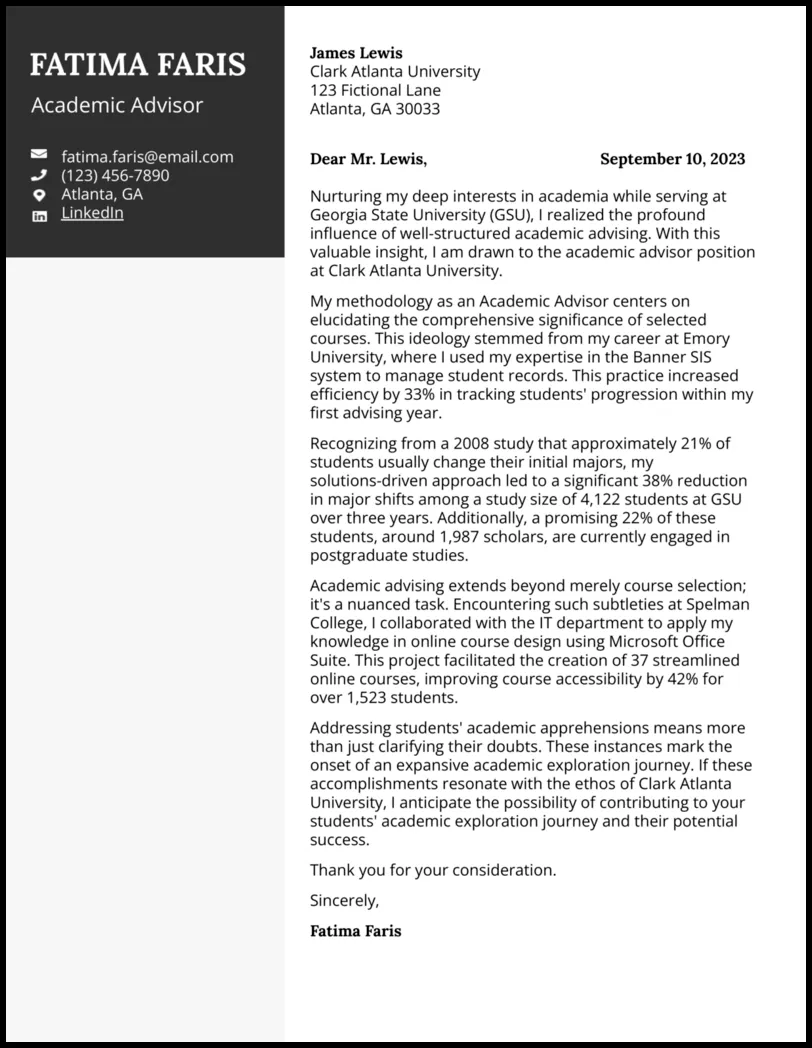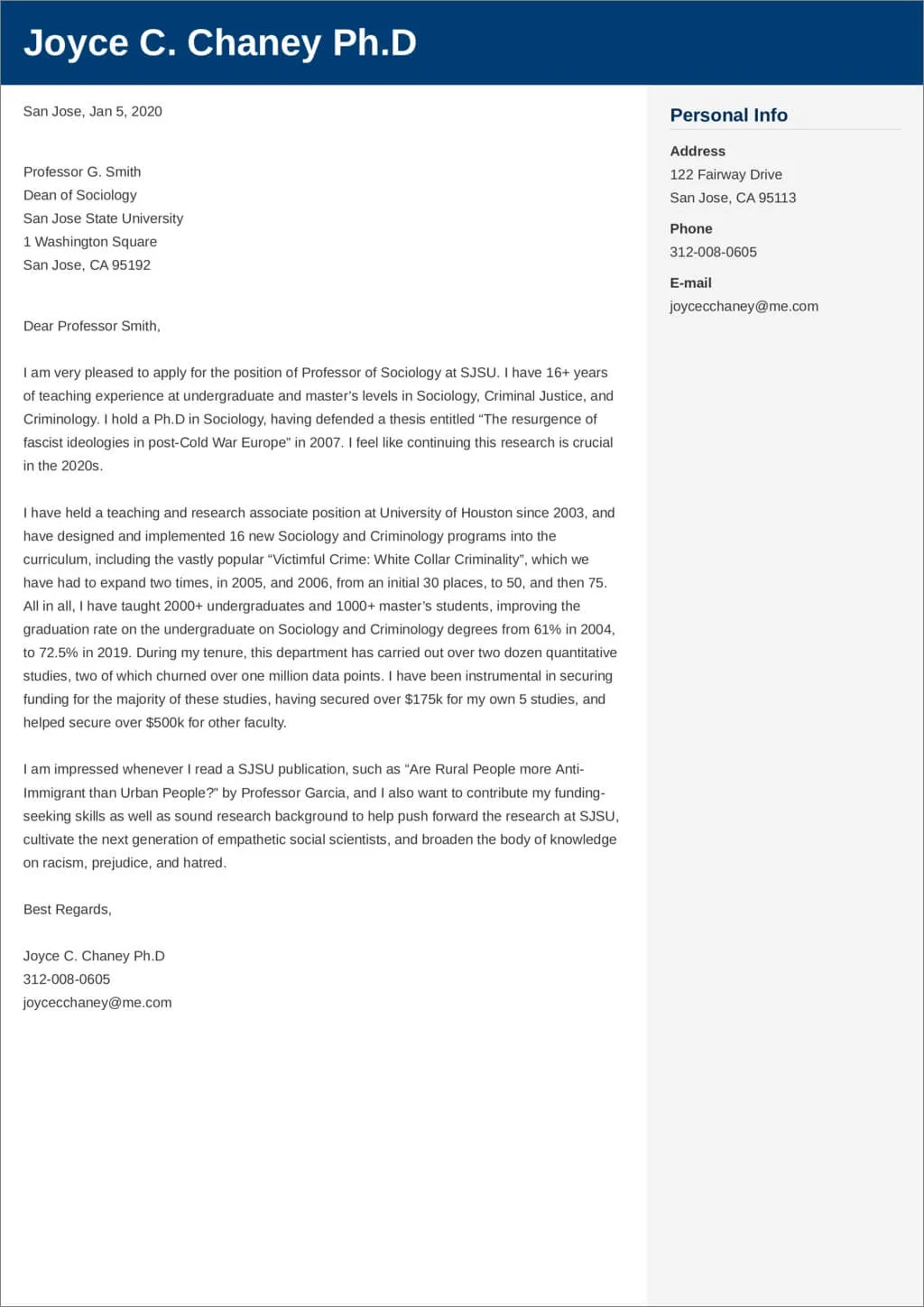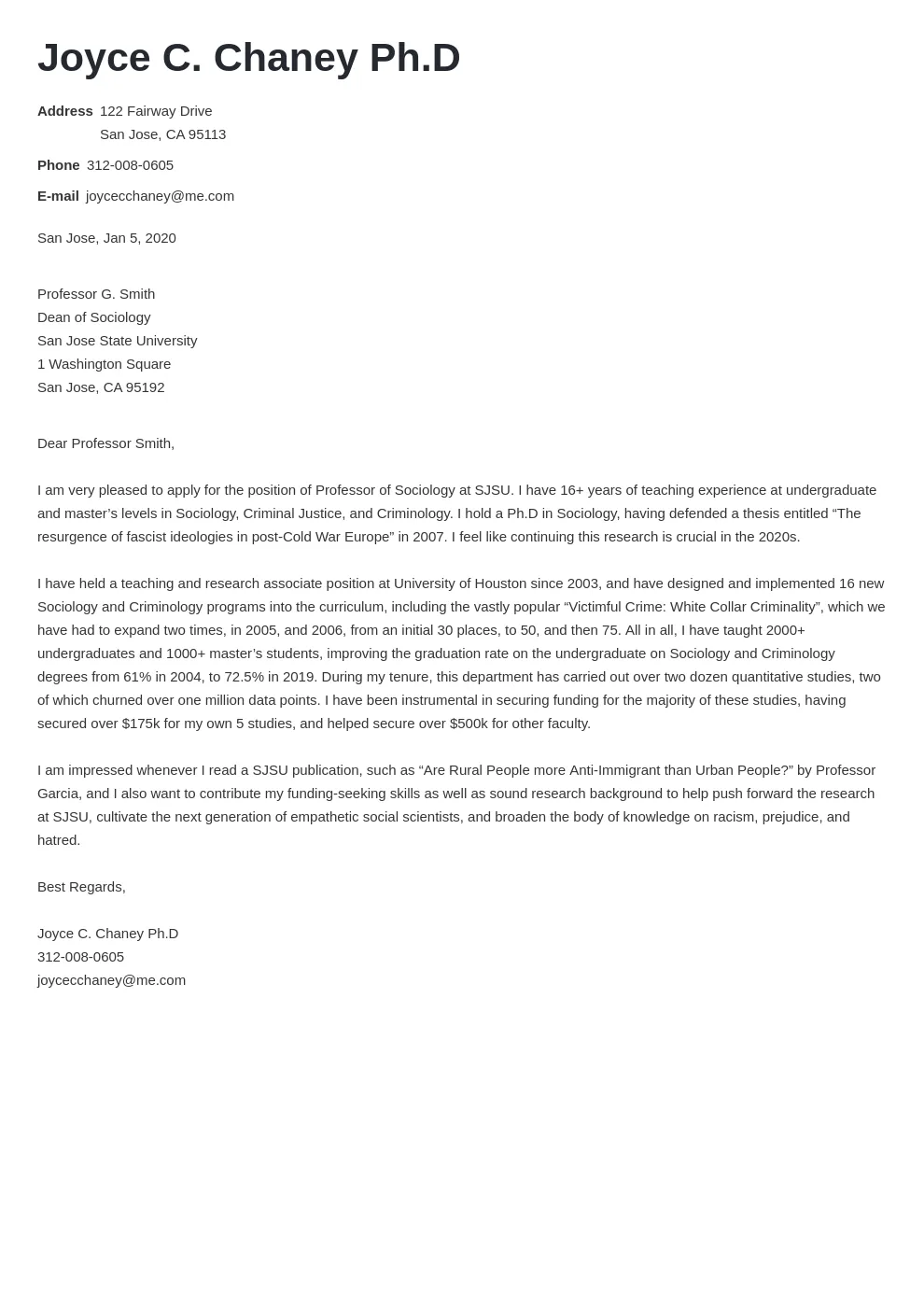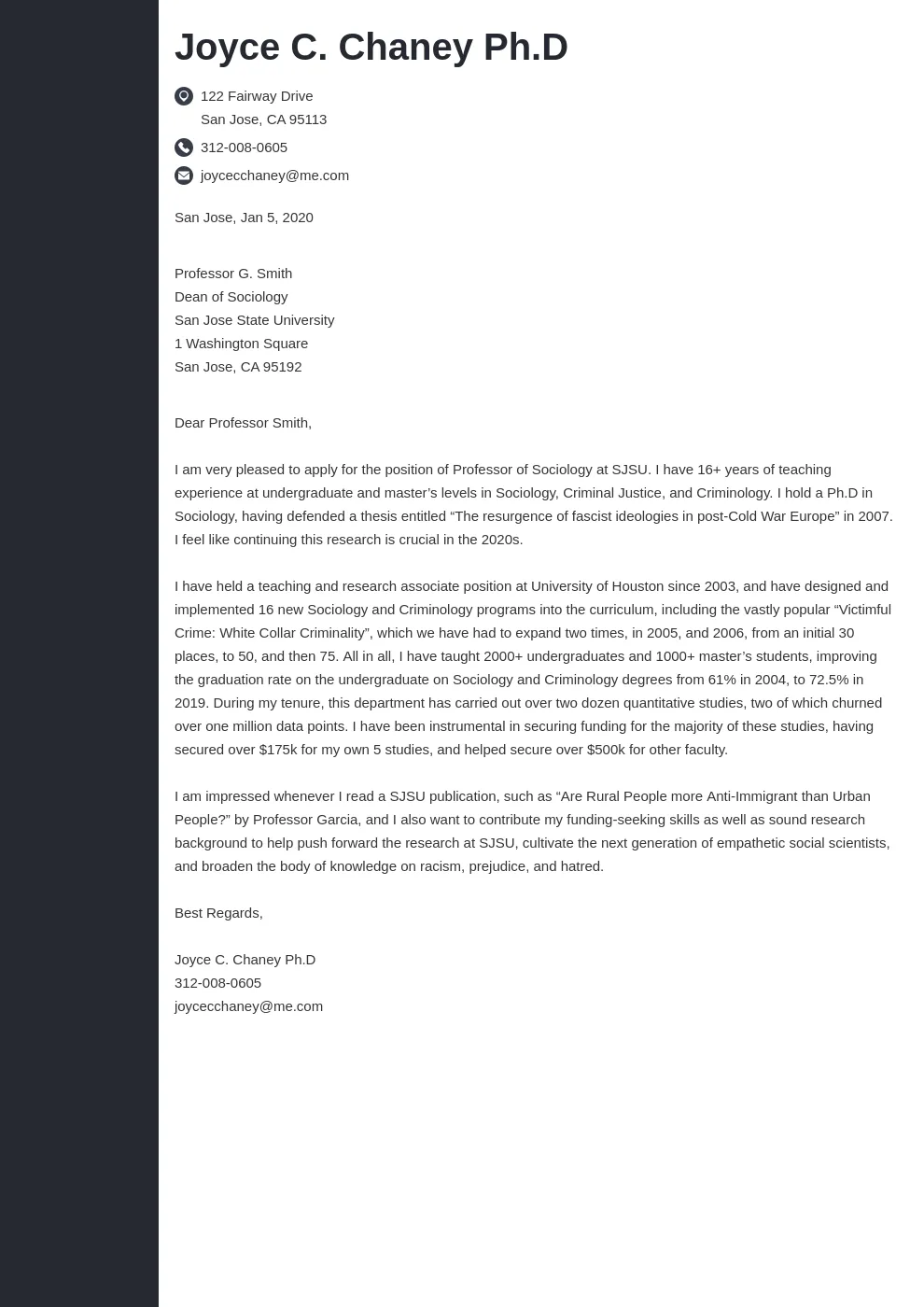Understanding the Academic Cover Letter
The academic cover letter is your first impression, a crucial document that introduces you to a hiring committee and showcases your qualifications for a faculty position. Unlike a resume, which presents a factual account of your experience, the cover letter allows you to narrate your story, explaining your research interests, teaching philosophy, and career goals. It’s your chance to connect your skills and experiences to the specific requirements of the job and to demonstrate why you are an ideal candidate. A well-crafted cover letter is personalized, demonstrating your understanding of the institution and the department’s needs. It provides context and depth to your resume, highlighting your accomplishments and expressing your enthusiasm for the opportunity. It should be clear, concise, and compelling, capturing the reader’s attention and encouraging them to delve further into your application materials. Therefore, understanding the purpose and scope of an academic cover letter is the foundation for writing a successful one.
Key Components of a Strong Academic Cover Letter
A compelling academic cover letter consists of several key components. Begin with a professional salutation, addressing the hiring committee or the specific individual if known. The opening paragraph should immediately grab the reader’s attention, stating your interest in the position and briefly highlighting your most relevant qualifications. The body paragraphs should elaborate on your research experience, teaching abilities, and any other skills or experiences that align with the job description. Each section should provide specific examples of your achievements and their impact. Quantify your accomplishments whenever possible. For example, state the number of publications, grants awarded, or students mentored. Make sure that you tailor your letter to the specific requirements of the position and the institution. Conclude with a strong closing paragraph that reiterates your interest and expresses your availability for an interview. End with a professional closing and your signature. The key components of your letter demonstrate why you are a suitable fit for this position.
Highlighting Your Research Experience

Your research experience is paramount in an academic cover letter. Clearly articulate your research interests and how they align with the department’s needs. Describe your research projects, focusing on your role, contributions, and outcomes. Provide evidence of your publications, presentations, and grant funding. Explain the significance of your research and its potential impact on the field. Tailor your description to the specific requirements of the job and the institution’s research priorities. Use language that is accessible to a broad audience, while still conveying the technical aspects of your work. Show a good balance between describing the ‘what’ and the ‘why’ of your research. What you have done, and why it is important. Detail any collaborative research efforts, emphasizing your ability to work effectively with others. Be specific about the methodologies you used, the results you obtained, and the conclusions you drew. Your research is the cornerstone of your application; make sure it shines.
Demonstrating Teaching Abilities
Teaching is another critical component of your academic cover letter, even if the position is research-focused. If you have teaching experience, provide specific examples of your teaching methods, course design, and student evaluations. Describe your teaching philosophy, emphasizing your approach to student engagement and learning. Highlight any innovative teaching practices or curriculum development work you have undertaken. If you have limited teaching experience, consider mentioning workshops or training programs you have completed. Explain how your teaching aligns with the department’s pedagogical approach. Discuss your experience with different teaching modalities, such as online teaching, blended learning, or in-person instruction. Mention the types of students you have taught and the size of the classes. Quantify your successes whenever possible; for example, mention positive student feedback or improvements in student performance. Teaching effectiveness is a highly valued trait in academia, and your ability to communicate your abilities in this area will enhance your application.
Tailoring Your Cover Letter
Generic cover letters are easily identified and rarely successful. Tailoring your cover letter to each specific job is a must. Thoroughly research the institution, the department, and the specific position. Review the job description carefully and identify the key requirements and desired qualifications. Address each of these requirements in your cover letter, providing specific examples of how your skills and experiences match the job’s needs. Personalize your letter by mentioning specific faculty members, research projects, or initiatives that resonate with you. Demonstrate your understanding of the institution’s mission and values. Show how your research interests and teaching philosophy align with the department’s goals. By demonstrating that you have taken the time to understand the specifics of the position and the institution, you significantly increase your chances of getting noticed and securing an interview. Tailoring your cover letter proves that you are genuinely interested in the opportunity and not simply sending out a mass application.
Showcasing Relevant Skills and Experience

Beyond research and teaching, highlight other relevant skills and experiences that demonstrate your suitability for the position. These might include leadership experience, administrative skills, grant writing proficiency, or experience with outreach or community engagement. Provide evidence of your ability to work collaboratively with colleagues and students. If the job description mentions specific software, methodologies, or equipment, be sure to highlight your experience with them. Detail any experience with diversity, equity, and inclusion initiatives. Quantify your experience whenever possible. For example, mention the amount of funding you secured through grants, the number of students you mentored, or the number of presentations you delivered. Tailor these skills and experiences to match the needs of the institution and the specific requirements of the job. Think about what distinguishes you from other candidates. If you have some very specific skills that the hiring committee might find particularly useful, be sure to emphasize these in your letter.
Formatting Your Academic Cover Letter
The formatting of your academic cover letter is just as important as its content. Use a professional and easy-to-read font, such as Times New Roman, Arial, or Calibri, with a font size between 11 and 12 points. Ensure that your margins are set to one inch on all sides. Keep your letter concise, ideally no more than two pages in length. Use clear and concise language, avoiding jargon and overly complex sentences. Break up long paragraphs into shorter, more digestible ones. Use bullet points or numbered lists to highlight key information or accomplishments. Proofread your letter carefully to eliminate any grammatical errors, typos, or inconsistencies. Use headings and subheadings to organize your content and make it easy for the reader to navigate. Make sure your letter is visually appealing and free of any distracting elements. Consider the overall presentation of your letter as a reflection of your professionalism and attention to detail. It will make a great impact on your application and is an essential skill to practice.
Proofreading and Editing for Perfection
Proofreading and editing are the final, critical steps in creating a strong academic cover letter. After completing your letter, set it aside for a day or two before reviewing it with fresh eyes. Read the letter aloud to catch any awkward phrasing or grammatical errors. Carefully check for spelling mistakes, typos, and punctuation errors. Ensure that your formatting is consistent throughout the document. Ask a colleague, mentor, or career advisor to review your letter and provide feedback. Consider having your letter proofread by a professional editor. Pay close attention to clarity, conciseness, and overall impact. Make sure that your tone is professional and enthusiastic. Ensure that your letter is free of any inconsistencies or contradictions. Proofreading and editing are not merely formalities; they are essential to ensure that your letter is polished, professional, and error-free. A well-proofread letter demonstrates your attention to detail and respect for the hiring committee’s time. Taking these steps will significantly improve the quality of your application and your chances of success.
Conclusion

Writing a compelling academic cover letter is a critical step in the job application process. By understanding the key components of a strong cover letter, highlighting your research and teaching experience, tailoring your letter to each position, and showcasing your relevant skills and experience, you can significantly increase your chances of success. Remember to format your letter professionally and to proofread it carefully for any errors. A well-crafted cover letter will not only introduce you to the hiring committee but also showcase your qualifications, enthusiasm, and potential contributions to the institution. By following these guidelines and investing the necessary time and effort, you can create a cover letter that effectively represents you and helps you secure your desired academic position. Good luck with your job search!
